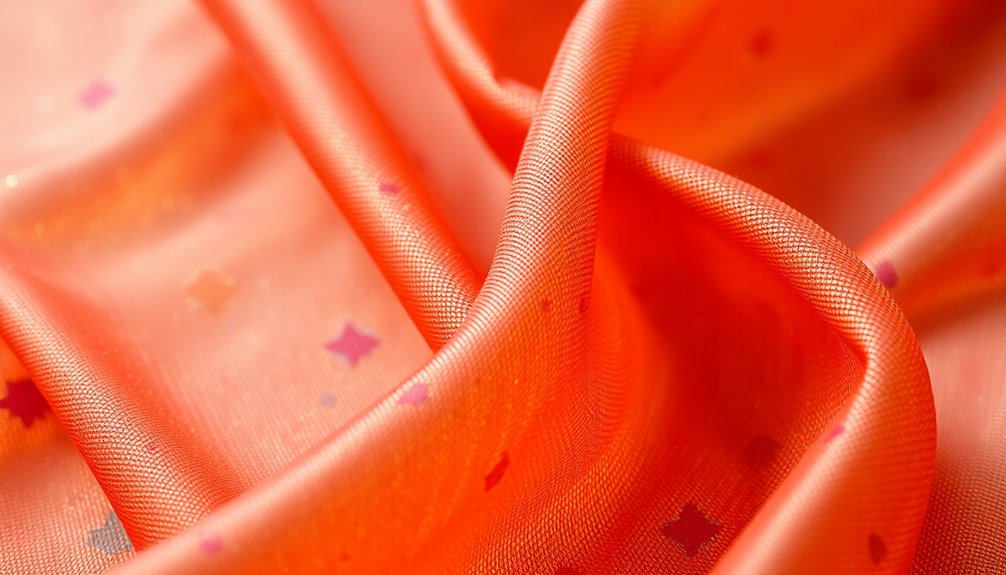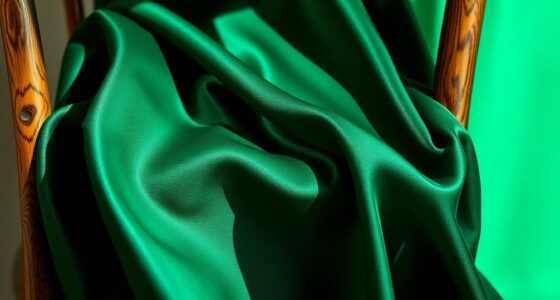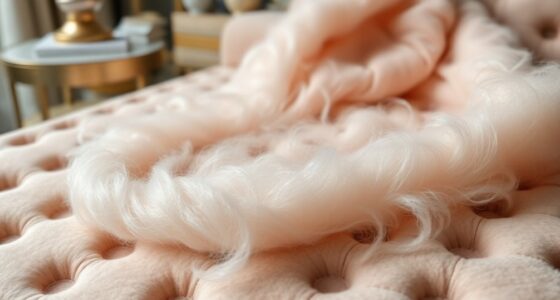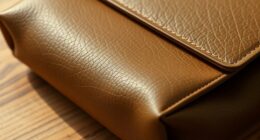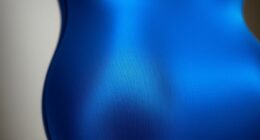Plashevka fabric is commonly known as "plush" or "velour." It's prized for its soft, textured surface that mimics the luxurious feel of velvet, making it a popular choice for clothing and home decor. You'll find it adds warmth and comfort to any space, enhancing your style. If you want to discover more about its properties and uses, you can find additional insights just ahead.
Key Takeaways
- Plashevka fabric is commonly known as plush or velour, characterized by its soft, fuzzy texture.
- It is a synthetic fabric often made from polyester or a blend of fibers for durability.
- The fabric is widely used in upholstery, clothing, and accessories due to its luxurious feel.
- Plashevka is popular for its vibrant colors and ease of maintenance, making it suitable for various applications.
- Understanding its properties helps consumers select the right fabric for comfort and style in their projects.
Understanding Fabric Names
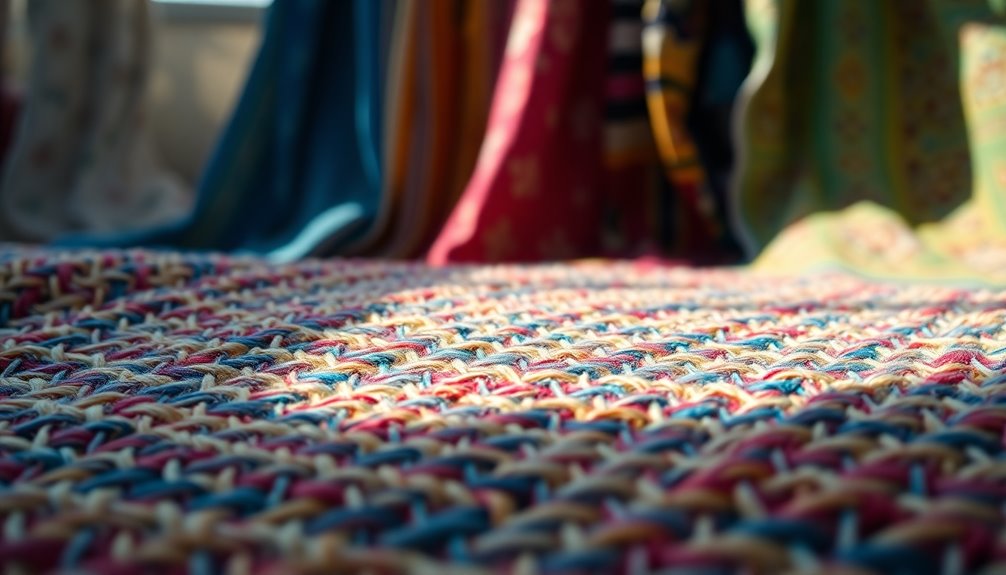
When you plunge into Microsoft Fabric, understanding fabric names is essential for effective resource management. Establishing clear naming conventions helps maintain organization and consistency within your environment. A well-thought-out naming convention is crucial for centralized artifacts, enhancing clarity and understanding of resources.
Remember that some artifacts, like Lakehouses, require names to have only alphanumeric characters and underscores, starting with a letter. Consistent naming not only aids in identifying resources but also enhances collaboration and governance.
Utilizing a framework with parameters like project name and component type can streamline this process. Abbreviations for component types, such as "pbi" for Power BI, simplify identification.
Exploring Fabric Types
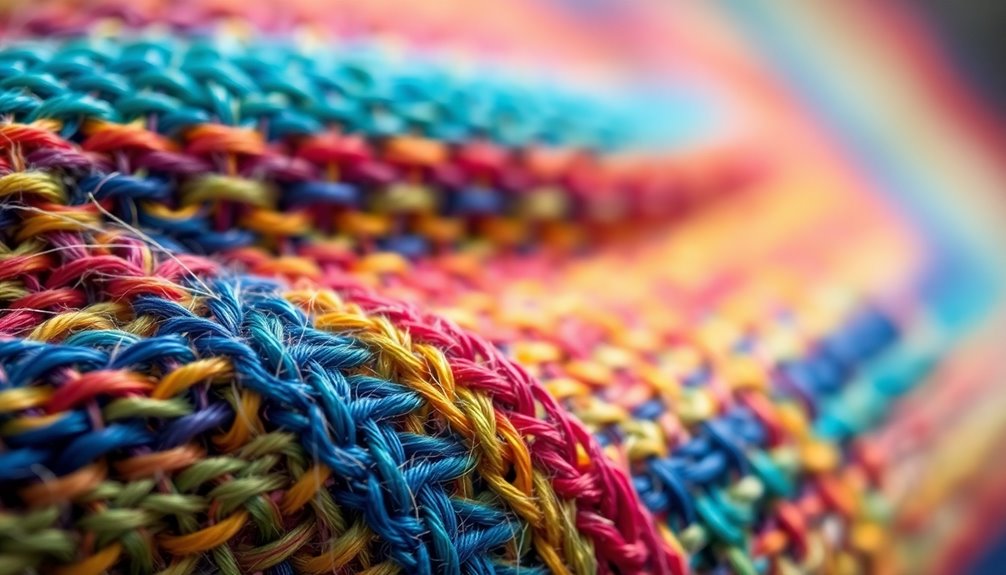
Understanding fabric names lays the groundwork for exploring the various types of fabrics available.
Fabrics fall into two main categories: natural and synthetic, depending on their fiber source. You can also classify fabrics by their construction methods—knit or woven—each offering distinct characteristics.
When you think about end-use, fabrics are tailored for different applications, whether it's apparel, household, or industrial textiles. Classification by utility helps to categorize fabrics based on their specific applications, enhancing the decision-making process for consumers.
For instance, cotton is breathable and absorbent, making it ideal for clothing, while silk adds softness and elegance. Wool provides warmth, and synthetic options like nylon offer durability.
Understanding these classifications helps you make informed choices for your projects, so you can select the right fabric type based on your specific needs.
The Fabric Manufacturing Process
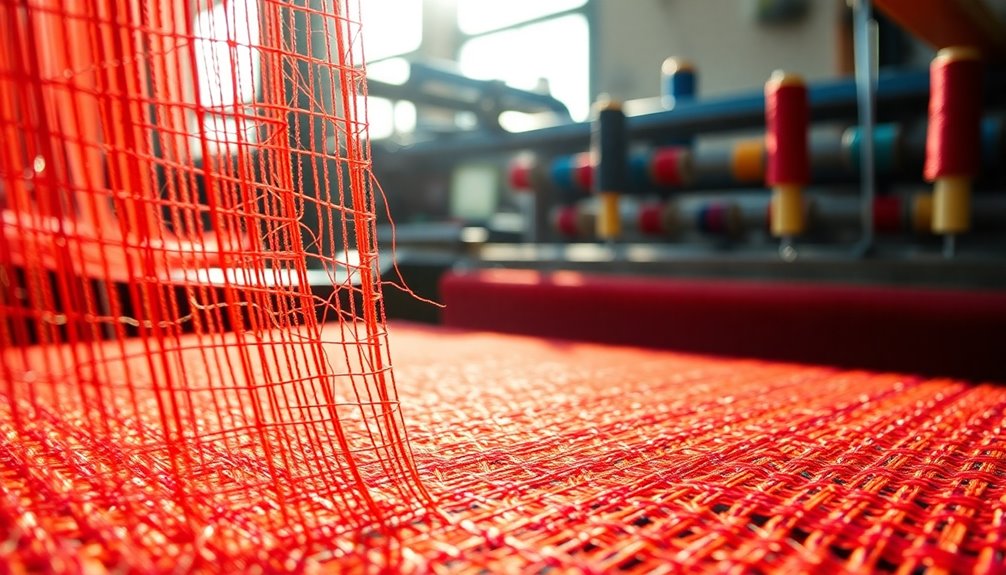
The fabric manufacturing process consists of several key stages that transform raw materials into the textiles we use every day.
First, raw materials like cotton or synthetic fibers are prepared. Then, these fibers undergo spinning, where they're twisted into yarn. You'll find the yarns wound onto spools, ready for weaving or knitting. Quality control guarantees the yarn meets standards before moving forward.
Next, the pre-weaving processes begin, including warping, sizing, drawing-in, beaming, and tensioning. During this stage, compressed staple fiber is unraveled using mixing and blowing machines to ensure quality.
During weaving, you'll see shedding, picking, beat-up, let-off, and take-up methods in action.
After weaving, finishing treatments like dyeing enhance the fabric.
Finally, the fabric is inspected, folded, packed, and shipped, ready for garment production and quality assurance before reaching consumers.
Common Natural and Synthetic Fibers
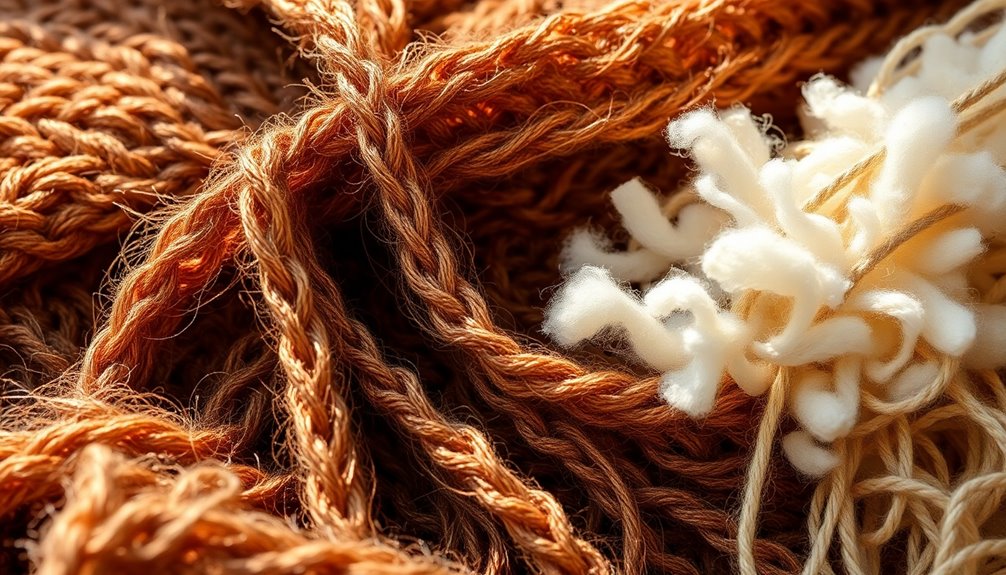
Fabrics are made from a blend of natural and synthetic fibers, each offering unique qualities that cater to different needs and preferences. Natural fibers like cotton, wool, silk, linen, and hemp provide breathability, comfort, and biodegradability. Cotton's softness makes it ideal for clothing, while wool's warmth suits winter wear. Additionally, understanding keyword research can help you identify the best fabrics for your projects and audience preferences.
On the synthetic side, fibers like polyester and nylon deliver durability and versatility. Polyester is wrinkle-resistant and quick-drying, perfect for sportswear, whereas nylon's strength makes it popular for swimwear. Acrylic mimics wool's softness, offering an affordable alternative. Each fiber type has its advantages, so understanding them can help you choose the right fabric for your specific needs.
Applications of Fabrics in Everyday Life
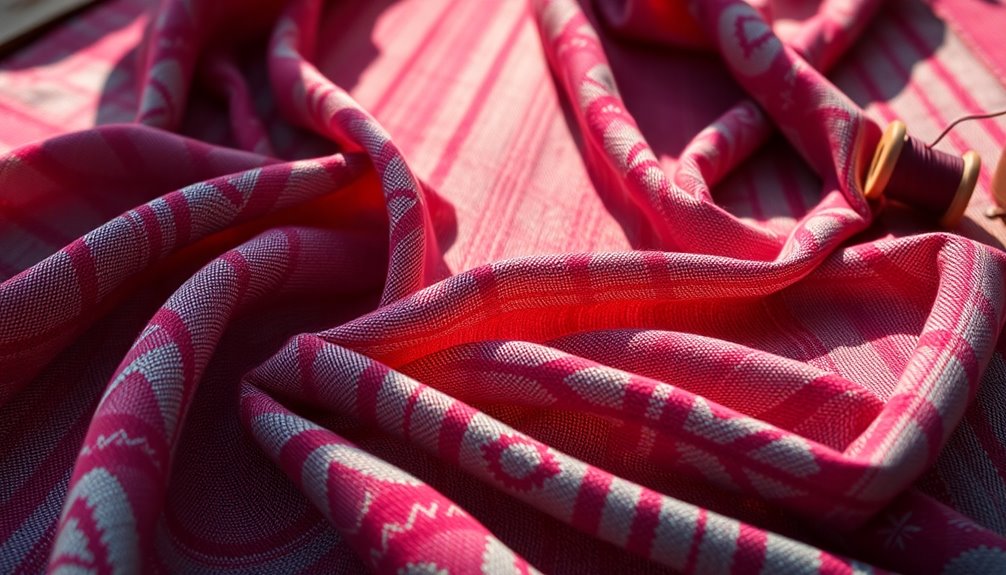
Everyday life is filled with a variety of fabric applications that enhance comfort, style, and functionality.
You'll find fabrics in your home, like curtains and upholstery that control light and provide cozy seating. Bedding and linens keep you warm at night, while carpets and rugs add aesthetic appeal to your floors. When dining, tablecloths and napkins elevate your experience.
In transportation, fabrics make car seats comfortable and durable, while airbags guarantee safety. Additionally, textile components in aerospace are crucial for constructing aircraft and rockets, ensuring safe and efficient travel.
Industrial applications range from geotextiles in construction to medical textiles used in dressings and PPE.
Even in leisure, sportswear boosts your performance, and camping gear keeps you prepared outdoors.
Fabrics are truly integral to our daily lives, serving countless purposes.
The Importance of Fabric Quality Control
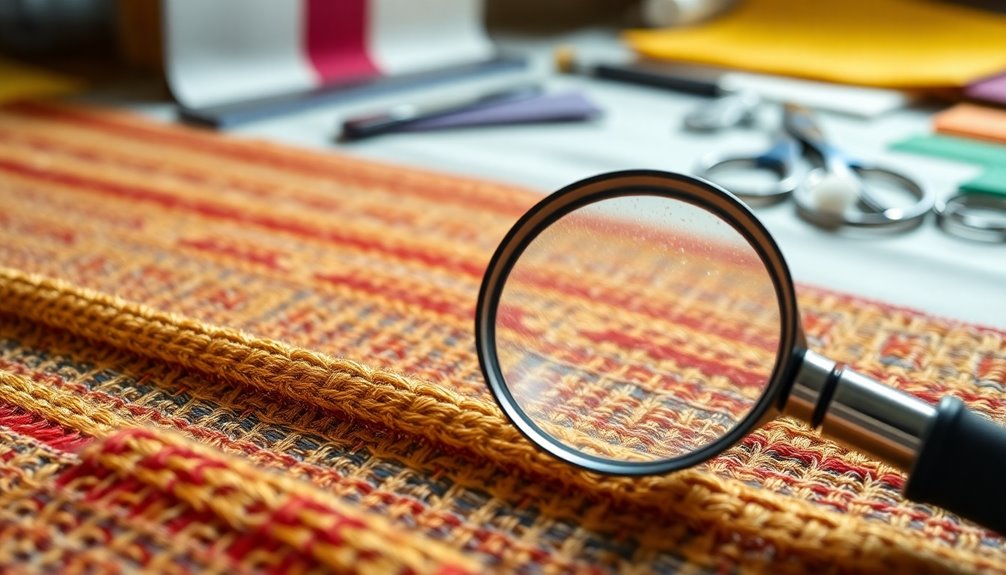
Quality control in fabric production is essential, as it directly impacts product performance and customer satisfaction. By minimizing defects, you catch issues early, saving time and resources. Additionally, effective quality control ensures textiles meet specific performance and durability standards, which is crucial for maintaining product integrity.
Consistent quality enhances productivity, guaranteeing smoother production runs. This approach leads to cost savings by reducing rework and waste, allowing you to maintain your budget effectively.
Moreover, quality control boosts customer satisfaction by meeting their expectations, fostering trust and loyalty. It also supports brand integrity by delivering high-quality products consistently, protecting your reputation.
Key components like inspection, testing, and process management help guarantee that every step meets established standards. By prioritizing quality control, you not only improve operational efficiency but also gain a competitive edge in the market.
Sustainability in Fabric Production
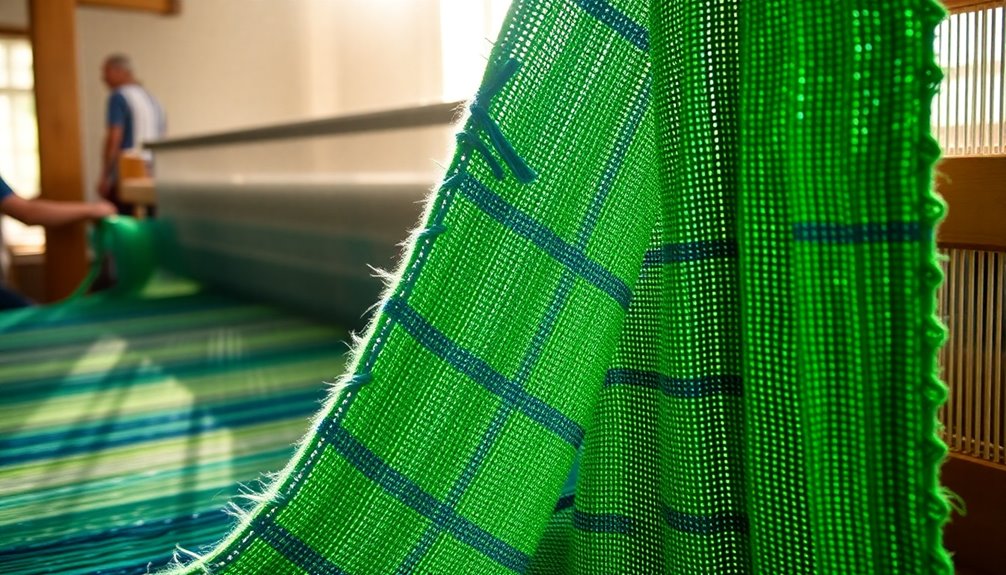
As consumers increasingly prioritize eco-friendly products, sustainability in fabric production has become a crucial focus for the industry.
You'll find that materials like linen and hemp are leading the charge. Linen, made from flax, is biodegradable and uses fewer chemicals, while hemp requires less water and pesticides than conventional cotton. Additionally, sustainable fabrics are less polluting than conventional options, with organic cotton being a prime example of a responsible choice that promotes soil health without harmful substances. Bamboo, a fast-growing plant, offers a renewable resource with minimal water needs.
Additionally, innovative algae-based fabrics provide natural dyes and biodegradability.
Innovations in Textile Technology

With the fabric industry embracing sustainability, it's also seeing a wave of technological innovations that are reshaping production and design.
You'll find AI and predictive analytics optimizing production and managing inventory with remarkable efficiency. Robotics and automation speed up tasks like cutting and sewing, enhancing overall manufacturing. Advanced robotics not only increases precision but also reduces human error, leading to higher quality textiles. Meanwhile, nanotechnology is revolutionizing fabric properties, making them self-cleaning and stain-resistant. Blockchain guarantees transparency in supply chains, confirming ethical sourcing practices.
Plus, digital textile printing allows for ultra-customized designs that cater to your unique tastes.
These advancements not only improve the functionality of textiles but also align with modern consumer demands for personalization and sustainability, marking a significant shift in how fabrics are produced and perceived.
The Future of Fabric Trends

While the fabric industry evolves, you're likely to see exciting trends that prioritize sustainability and innovation. Eco-friendly materials like organic cotton, bamboo, and Tencel are becoming mainstream. Natural fibers are being increasingly favored, as consumers seek options that are free from harmful chemicals.
Recycled polyester is making waves in interior decor, while lab-grown leathers offer sustainable fashion alternatives. Brands are increasingly focused on reducing their carbon footprints through localized production and ethical sourcing, using blockchain for transparency.
You'll also notice smart textiles that provide temperature regulation and health monitoring features, along with customizable options for your personal touch.
Earthy tones and jewel hues are trending, paired with a mix of textures for sensory-rich environments. With advancements in AI and on-demand manufacturing, the future of fabric promises to be both creative and responsible.
How to Choose the Right Fabric
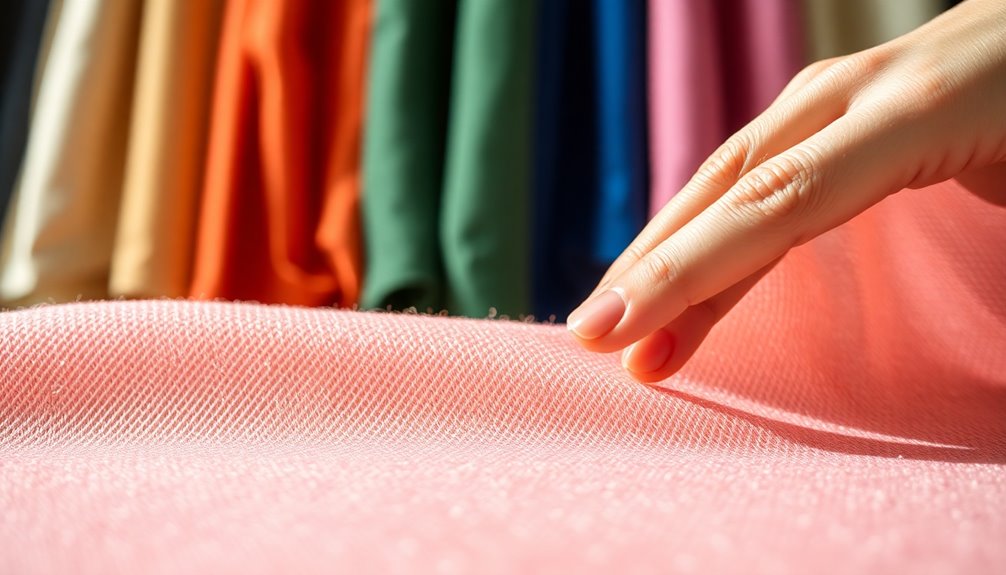
Choosing the right fabric can greatly impact the success of your sewing project. Start by considering your skill level; some fabrics are easier to work with than others.
Think about the occasion for your garment—cotton is perfect for everyday wear, while silk suits special events. High cotton content is ideal for beginner sewists.
Understand the fabric properties, like durability and drape, to guarantee it meets your needs.
Seasonal factors matter too; opt for lightweight linen in summer and warm wool for winter.
Don't forget your budget—balance quality and affordability.
Finally, keep sustainability in mind; eco-friendly options like organic cotton can enhance your project's appeal.
Frequently Asked Questions
What Is the Origin of the Name "Plashevka Fabric"?
The name "plashevka fabric" likely originates from Eastern Europe, possibly derived from Russian or another Slavic language.
You might notice its usage in contexts related to Soviet-era boats and clothing, highlighting its regional significance.
This term reflects the resourcefulness of Soviet manufacturing, as the fabric was known for its durability and water resistance, making it ideal for marine applications.
Its connection to local production suggests a rich cultural and historical backdrop.
Are There Any Historical Uses of Plashevka Fabric?
You might think plashevka fabric is the superhero of textiles, but its historical uses remain a mystery.
While there's limited documentation, it's known for versatility in modern clothing and boat upholstery.
You'll find similarities with synthetic fabrics like nylon, which gained popularity in the mid-20th century.
Though its cultural significance is unclear, it's clear that plashevka has carved out a niche in durability and ease of maintenance in various applications.
How Does Plashevka Fabric Compare to Other Fabrics?
When you compare plashevka fabric to other materials, you'll notice it shares characteristics with vinyl leather, offering durability and a slightly stretchy feel.
Unlike breathable natural fibers like cotton, plashevka's synthetic composition makes it less airy but more resilient. It's great for cooler seasons and is easy to maintain.
While it's comfortable due to its elasticity, some might find it less soft than other fabrics, impacting overall wearability.
Is Plashevka Fabric Suitable for Outdoor Use?
Yes, plashevka fabric is suitable for outdoor use.
Its synthetic nature offers good durability and water resistance, making it ideal for various weather conditions.
You'll appreciate its abrasion resistance and moisture management capabilities, which enhance comfort during outdoor activities.
While it can handle sunlight, you should keep an eye on prolonged exposure to prevent fading.
What Care Instructions Are Recommended for Plashevka Fabric?
Did you know that improperly caring for fabrics can reduce their lifespan by up to 50%?
For plashevka fabric, you should wash it in cold water using a mild detergent. Avoid bleach and fabric softeners, as they can damage its special finishes.
Air dry or tumble dry on low heat to keep it looking fresh. If stains occur, pre-treat them before washing to maintain the fabric's vibrant appearance.
Conclusion
In the world of textiles, understanding fabric names is like steering through a vast ocean; knowing the depths of plashevka can help you sail smoothly through your choices. Whether you're drawn to its unique texture or sustainable qualities, embracing the right fabric elevates your style and comfort. As you explore your options, remember that each fabric tells a story, and choosing wisely can transform your everyday life into a vibrant tapestry of experiences. Immerse yourself and discover!
